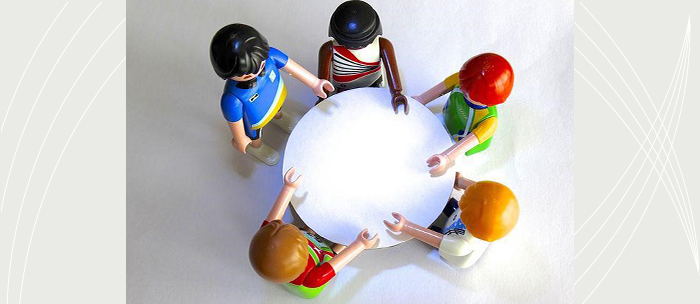
Melbourne University philosopher, John Armstrong wrote “A conversation is a work of art with more than one creator". With the increased pace of daily life; greater use of technology; bombardment of information via internet; abbreviated texts and 'twittered' exchanges, many wonder if the art of conversation is dead.
Time is required, as conversation takes place between two or more people over an extended period of time. A careful exchange of thought, opinion and information is involved. Participants must listen attentively in order to respond thoughtfully. There is likely to be ebb and flow in a conversation as each person takes time to consider the other's point of view before speaking again. There can be twists, turns, eddies and tributaries throughout a conversation as expressed ideas and opinions spark interest, require further explanation and time to explore the reasoning behind beliefs. Conversation may be nuanced, with attentive conversationalists attuned and skilled at delving deeper and exploring further.
Conversations are not merely an exchange of information – they involve talking with rather than talking at another. John Armstrong explains, “A conversation is the encounter of two polished minds: tactful enough to listen, confident enough to express their true beliefs; subtle enough to search out the reasons behind the thoughts." Development of the relationship between participants is an important aspect of conversation. Meaningful conversations within families are critical to developing an understanding of, and respect for, each other's point of view. Crucial to shaping another's thoughts, beliefs and values, conversations must be undertaken regularly by those who value family relationships and want to maintain healthy communication patterns within the family – including where family members may hold strongly opposed opinions on some subjects.
Traditionally, conversations took place among family members and friends in front of the campfire, sitting in lounge rooms or at the dining table. With increasingly busy lives; mealtimes sequenced to allow for family members' various activities; media intruding into meals or at other times that might otherwise have been used for conversation, there seem to be few opportunities for relaxed, animated or intense conversations. It may be necessary to consciously create opportunities for conversations among family members. Holidays usually provide more relaxed time with fewer constraints; time for conversations while travelling, walking or doing activities together; time to linger over meals or around a campfire. Proximity, sufficient time, the absence of distractions (especially media-based distractions), a relaxed atmosphere, genuine interest and respect, together with open questions will help to initiate conversations. The art of conversation takes time to develop; however modelling these skills and providing regular opportunities to engage in conversation helps to build these skills, which are so critical in relationships and throughout life.
© Michele Juratowitch
michele@clearingskies.com.au